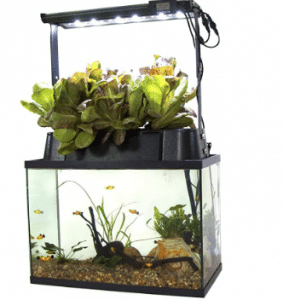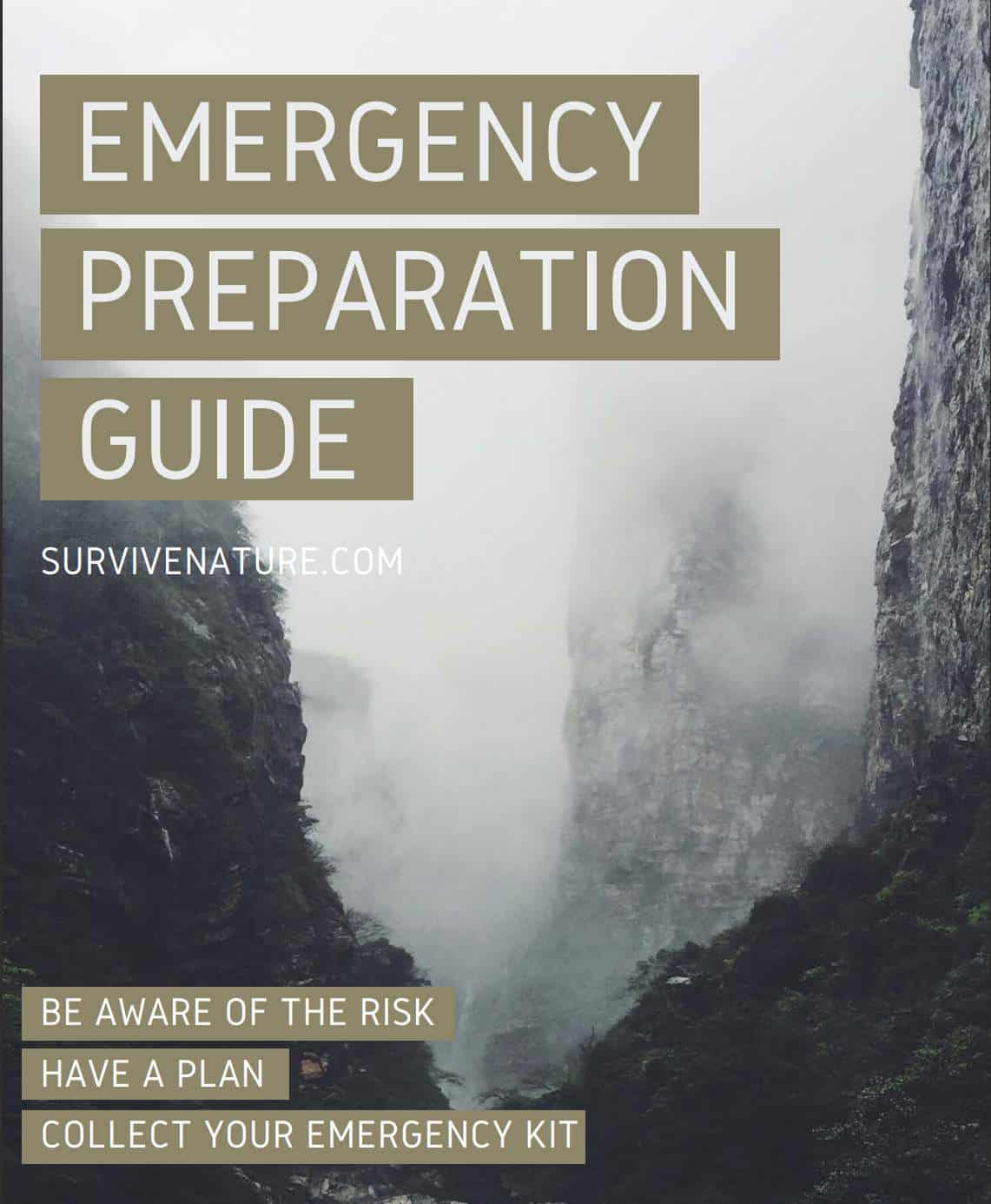DIY Aquaponics and hydroponics, increasingly relevant in 2023, can significantly raise your chances of long-term survival. While you can grow fish and seafood in a tank or an aquarium, you can also grow roots, vegetables rich in nutrients, using hydroponics. Learn how to have self-sustainable foods, grow a goldfish or tilapia in our article.
To begin with, Aquaponics, in other words, is another way to produce foods with your own hands. Thus, it is beneficial if you want to expand your food supplies and make a handmade vegetable garden.
Nowadays, this method of food production is very underestimated. Experienced survivalists already use this system and say that if you have to manage without the common amenities for a long time, Aquaponics is a perfect option.
So, in the next article, we will tell you all the information you need about aquaponics, and we are sure that after reading it, you will not have any questions, but only the desire to build your own DIY Aquaponics system.
Aquaponics System Definition

The Aquaponics system is a closed setup for organically growing fish and plants in the same place and at the same time. Aquaponics is a combination of aquaculture and hydroponics (hydroponics is planting without soil).
Aquaponics mimics the natural circle of life, letting you grow food at the same time. Plant fertilization comes from the waste products of fish in the aquarium. Microorganisms convert the fish loss products into nutrients that plants need while they are purifying the water.
Fish secrete ammonia throughout their life, which is in the aquarium water. In the process of biofiltration, this substance is processed into nitrate compounds, which are needed for plant growth. They consume them directly from the water through the root system.
As you may guess, the Aquaponics system means more food in less space, the amount of water, and labor.
If you could not imagine what this process looks like, then its design is offered to your attention here:
- Fish waste results add ammonia to the aquarium water tanks;
- The water from the fish is elevated to containers with plants or bacteria;
- Natural biofiltration begins, and bacteria produce nitrates from ammonia;
- Plant roots absorb these nitrate compounds;
- Plants purify the water, and then the resulting clean water returns to the aquarium (fish tank).
The video below shows what opportunities a homemade Aquaponic system opens up for you:
Don’t forget to check out our complete example on how to plan your family survival products’ shelf (tap right here to reach the article on family preparedness).
Science of Aquaponics Described
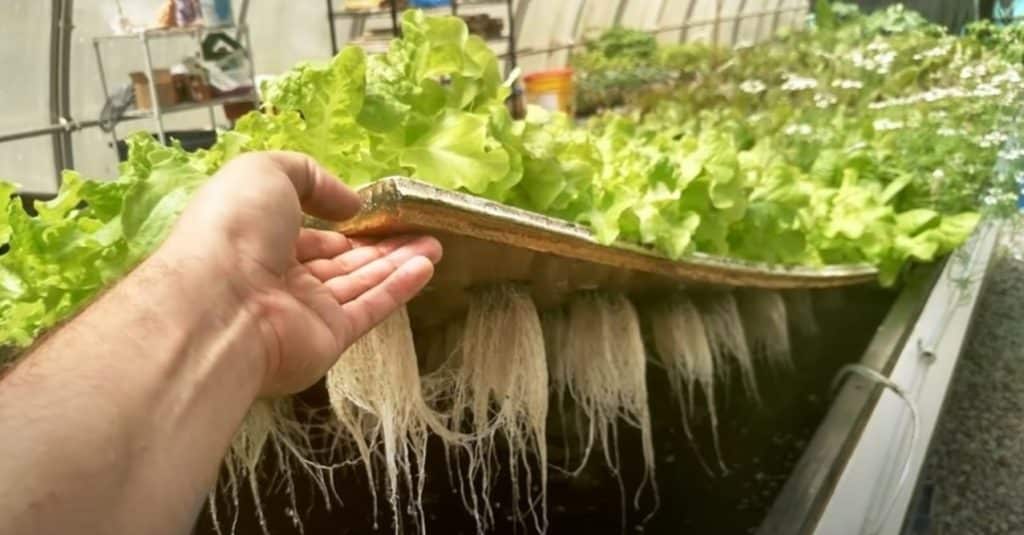
Nevertheless, as we said above, fish waste is an integral part of the metabolism in the aquaponic system; they feed the plants and supply them with the essential macronutrients and microelements.
It turns out to be a sort of living secured cycle, in which the forced introduction of chemicals that promote the development of vegetation is not required. You just need to feed the fish with regular fish food, that’s it.
Why Aquaponics?

Aquaponics systems produce both protein and vegetable crops, which is certainly handy when you have to deal without the usual comforts. That allows people to produce food continuously. Plus, it’s good for people who love taking care of animals and the garden, in our case, feeding the fish and looking after the plants.
The Aquaponics system itself consists of containers or tanks filled with water. A raft with plants in holes floats on them, the roots of which hang freely in the water. Water supply and discharge occur in the same way as in other systems.
The principle of operation is simple: the water gradually rises, then through a thin tube along the return line, it is drained back to the fish tank. The aquarium is gradually filled with water again.
To sum up, it is fair to say that the DIY indoor Aquaponics system is a very eco-friendly way to grow food (plants and fish) in TEOTWAWKI or pandemic’s scenario, or perhaps even now.
By the way, make sure you know how to act during the crisis and what gear you will need by reading our excellent guide.
Independent Nutrients Making
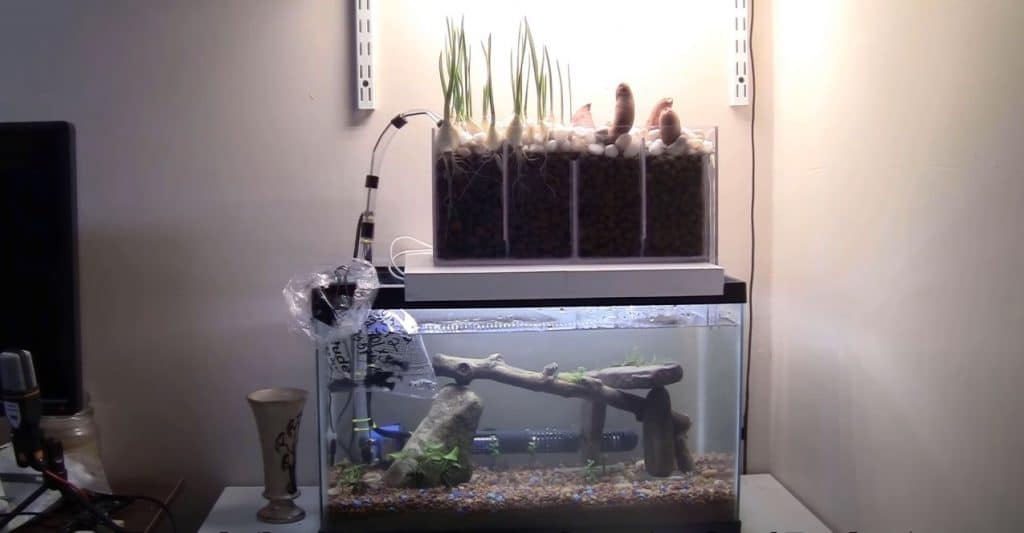
Certainly, having a self-sufficient food growing system for contingencies can be very expensive and time-consuming, not to mention the fact that it requires extensive real estate. And even more so, not everyone would be ready to devote all their energy to looking after this kind of household.
And here, the main question is brewing. Is it possible to implement such an idea, taking into account not to spend all one’s strength on it and not to have a farm the size of a stadium? The answer is obvious, of course, you can! If you strain a little and make your own DIY Aquaponics system at home, backyard, etc. Here everything will depend on your imagination.
How Beginners Create Aquaponics
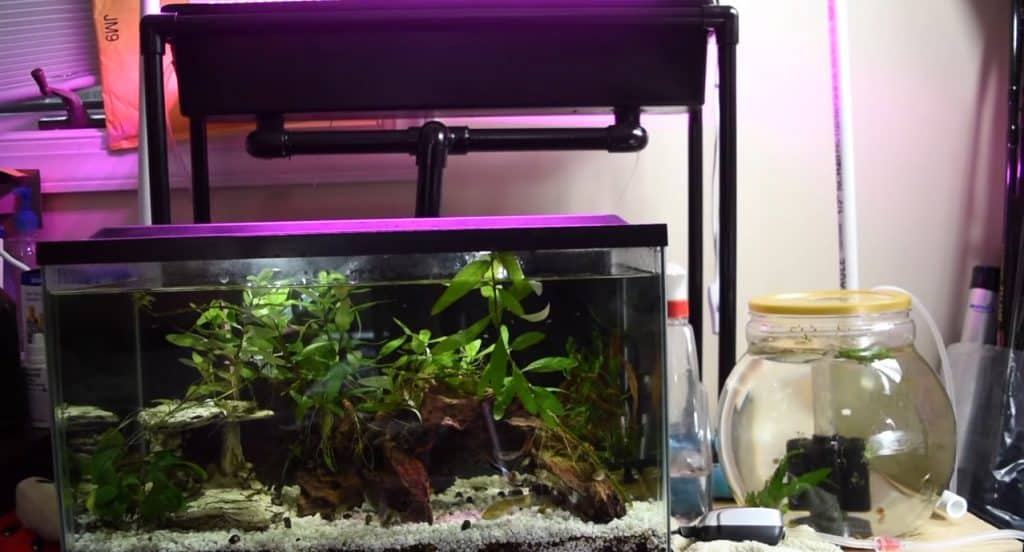
Before you directly start preparing to build your own Aquaponics system, you should at least have an idea of what kind of work awaits you.
First and foremost, they come in a variety of sizes and budgets, from small systems to full-scale farms. This way, you can even resize your existing aquaponics system in case you want to breed more fish or vegetables.
Sometimes, the amount of food is produced in excess. In this case, simply freeze the food and store it like all other food for future use.
The easiest way to build tanks for aquaponics is by using intermediate bulk containers (IBC), which already have all the required plumbing. Also, pallets can be embedded in these containers as they already have grounds for them. Thus, this Aquaponics system is simple and, at the same time, very durable if you transfer it.
The IBC has presented in the video below:
The greatest advice for all the newbies: you don’t need to build the big system right away. Just start with small ones using one tank.
Materials for Aquaponics
The first thing you’ll need when building a home Aquaponics system is a fish tank. Furthermore, the tank can be of different sizes, and you can also use a natural water filter. And as we said above, intermediate bulk containers are great for this.
The fish tank is designed in the same way as a regular aquarium. In order for the fish to feel comfortable, it is vital to maintain certain parameters of the fish tank environment, depending on the needs of a particular fish species. It is also crucial to provide the fish with optimal lighting and proper temperature conditions.
By the way, custom mini Aquaponic systems are commercially available. And if you are thinking of purchasing a system that will have everything you need, we recommend that you take a closer look at such a thing as Ecolife ECO-Cycle Aquaponics Indoor Garden System, which is shown below:
The next thing you should take care of is the containers for greens and vegetables. They do not have to be the same size as the fish tank. However, it is important to use strong ones because they are durable and will last longer.
And last but not least, choose between all the possible plumbing devices and pumps. It is also necessary to use water and an air pump that will ensure high levels of dissolved oxygen in the water and water movement in the system: this is necessary to maintain the health of animals, bacteria, and plants.
Experts recommend placing small containers with seedlings at the top of the container. Further, the water will gradually rise up the hose, reaching the level of the siphon. After some time, it will begin to drain back into the aquarium using a thin plastic tube. Therefore, it is crucial to take care of the correct setting of the plant container.
It is vital to choose the right size of the pump that will elevate water. You must know how to use it correctly so that the water can slowly drain back into the fish tank. Thus, you will avoid root rot because the roots do not need to be constantly submerged in water. If your aquaponics system is miniature, choose between industrial-sized pumps. Otherwise, garden pond pumps are suitable.
Two holes should be made in the tank for water to enter (at the top of the artificial reservoir) and drain back into the fish tank (at the bottom of the container). A hose is installed on top through which the liquid is supplied, and a special siphon is constructed below to drain it.
The pump must be adjustable. This ensures that the required h2O level in the plant tank is maintained, as well as a regular cycle. And in addition, the pump that moves water flow from the tank to the grow beds should be on a timer that turns it on.
Water is the source of life in the aquaponic system. It is the environment where all the nutrients plants need are transferred, and it is the living ecosystem for fish. To make this environment inert, pea gravel, coarse sand, or expanded clay pebbles can be poured into containers with plants. Coconut fiber works too.
In the next video, you will learn how to design these systems more accurately:
As a result of living organisms’ vital activity in the aquarium, many dangerous compounds are released. Filtration is applied to remove them. That is, the water supply to the plant tank should be carried out using an internal or external aquarium filter.
Deciding on Fish and Greens
The fish and vegetables you choose for your DIY Aquaponics system should have the same temperature and pH requirements, and the bacteria are the same for all the conditions.
Temperatures are an important subject in general, especially if you are planning to build an Aquaponics system outdoors. You need to care about the conditions, as it affects your result. We know that you want your fish and plants to grow year-round, so please mind the circumstances.
The next two paragraphs will help you to learn more about the water temperature range.
Cold Water Tanks
In cool fish water, yellow perch and catfish will feel pretty well. If you think of purchasing a trout, it will not work if you are using the most basic Aquaponics systems. Trout is still better left for a more professional setup with a stable water supply and high oxygen content. Therefore, it is better to start fish of the sturgeon and perch families in a cold environment.
For vegetables grown in cold water, thick leafy greens such as spinach or kale are best, maybe even fruiting plants as well (but it will be tougher, you know).
Warm Water Tanks
If you are thinking about plants and fish tanks with warm water, choose among fish species that live in a growing area with a small amount of dissolved oxygen (tilapia, yellow perch, channel catfish).
Perch (like tilapia)is very popular for Aquaponics systems. It is excellent for Aquaponics for many reasons. It is easy to breed, grows quickly, withstands various water conditions, is omnivorous and well-fed. What is more, perch and tilapia taste great. It is a perfect type of fish, especially for beginners.
Channel catfish, in turn, grows very quickly, but the only thing is that before you cook it, you must remove its skin, and this is a rather complicated process.
Lettuce, peas, and basil usually give an aquaculture quick harvest in such water conditions, that is, greenhouse plants and leafy greens.
And, returning to the topic of fish, we want to invite you to watch a video in which they talk in detail about each type of fish for different conditions:
Building The Aquaponics System
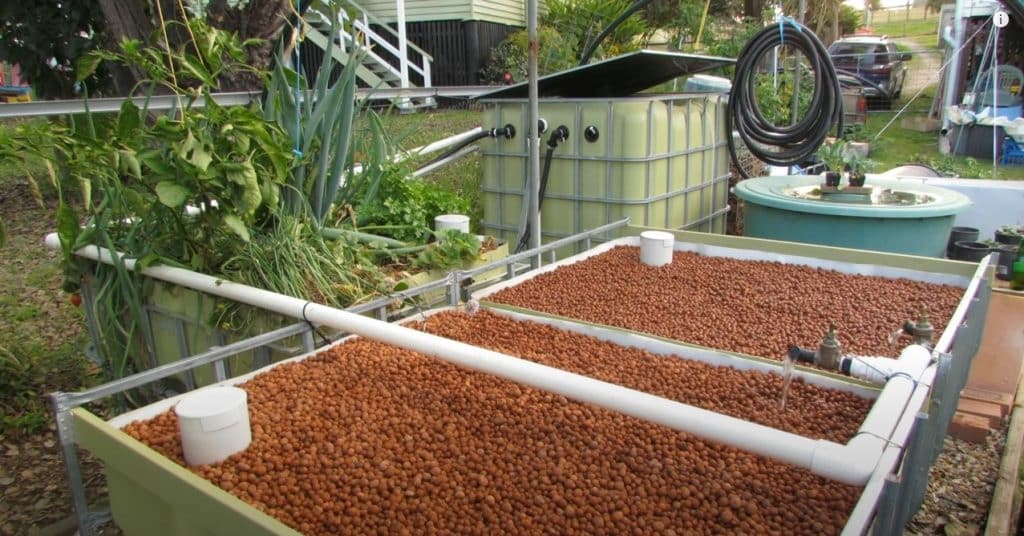
But it is essential to start preparing in advance, since getting the result and even starting the process itself takes time. Therefore, at first, we recommend doing the following step by step:
1. Choose the spot for a tank
First of all, you need to determine the location of the equipment of the Aquaponics system. Plants need to be under the sun for several hours to develop quickly. So be sure you chose a place that has plenty of sunlight (or use artificial lights). But! Outdoor Aquaponics systems should be covered with a covering material for sun protection.
It is also worth thinking about the fact that your Aquaponics system’s location is permanent so that you do not have to drag it to another place. This is due to the fact that, firstly, the structure is heavy, and secondly, it adversely affects all “residents” of this Aquaponics system. It is also important that your Aquaponics system is stable because you need a steady, level surface to work with.
Moreover, don’t forget to think about aquarium purification, which we talked about earlier.
2. Set up the system
After you have chosen a safe place to install your Aquaponics system, it’s time to move on to the plumbing installation, that is, set up the pumps and PVC pipes.
It is essential to make sure that the containers with plants are at a higher height than the fish tank. You can place the plants on a shelf or even on a hillside if you plan on doing it outdoors.
A round hole is cut out in the upper part of the plant container. A connecting fitting is mounted to attach the inlet hose. At the bottom, the same is done to drain the water. Of course, all joints must be reliably sealed.
To provide the aquarium with dissolved oxygen, add a pump and sand or pebbles and then line them with a pond liner. And then add everything else for the basic conditions for your Aquaponics inner life. It’s also crucial to get rid of excess chlorine here. Just give it time to dissolve before putting “residents” in there. Reduce chlorine dissolution time by circulating water: turn on the air pump and leave it running. It usually takes several days.
3. Plant seedlings
Once you have supplied the system with clean water, you can already start-up plants and bacteria. But you will have to wait for a little with fish.
By the way, some experienced owners of the Aquaponics system recommend using a starter culture that will help you create a bacterial colony that can be fed with ammonia in the future (you can find ammonia in most aquarium stores or even in your regular grocery store).
Next, you will need different accessories to test the chemicals. If the nitrite is already completely converted to nitrate, then you can safely add plants. But still, before introducing fish into the Aquaponics system, you need to wait for a little while the weeds take root, and the bacteria turn ammonia into plant food. Hence, the fish will not be stressed by the unusual composition of the water.
4. Put fish into the tank
After you have made sure that the whole system is working (and is working stably), you can add fish, but slowly, allowing them to adapt to the new environment and water temperature. If you put all the fish, you plan to start at once. They may not get used to the new environment or even die due to new sensations.
It would be perfect to ask the person or company from whom you buy the fish how best to make them acclimatize quickly.
5. Run the Aquaponics
It will be easier further. Once your self-sufficient Aquaponics system runs properly, it will not require constant year-round maintenance from you.
Surely, you will have to feed the panfish with regular fish food, and you will also need to check the chemical composition of the water where they live sometimes. But this is a small matter.
We are thrilled that you have read up to this point, and we understand that you take the idea of creating Aquaponics very seriously. But you should think even better and calculate all the economic nuances so that there would be no unpleasant incidents later.
What is more, we recommend you examine this particular subject as it will help you get the desired result faster without facing any difficulties.
Modifying Your DIY Aquaponics
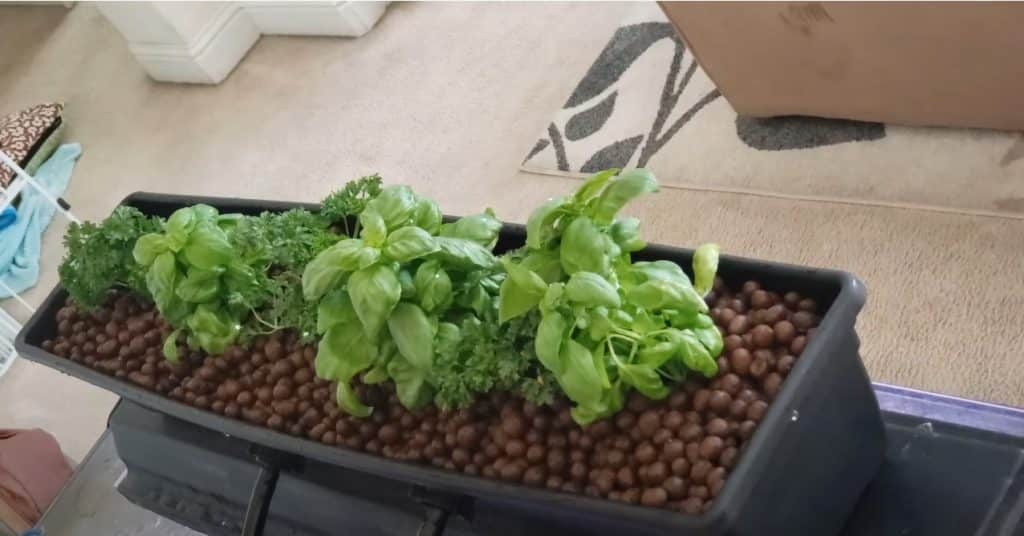
The uniqueness and variability of this method of obtaining food allow preppers to feed themselves, their family, and the whole community, which is certainly very cool.
And even more, you have the opportunity to improve and modify the DIY Aquaponics system’s form and set up in general. Watch this video on how you can do this from a Ted Talk:
FAQ
How much does it cost to build an aquaponics system?
Everything will depend on what quality components you want to purchase. You can buy the cheapest in local stores, or, on the contrary, get too involved and buy the most sophisticated ones. Or maybe even you already have some basic elements at home. It all hangs upon what kind of Aquaponics system you want to build and from what.
Can you do aquaponics without fish?
Obviously not. Since plants get all the vital elements from fish waste, so fish is an integral part and 1/2 of the entire Aquaponics system.
What can be grown in aquaponics?
Typically, leafy greens grow well in aquaponics, along with some of the more popular vegetables, including tomatoes, cucumbers, and peppers. And tilapia, catfish, and carp are often grown from fish.

